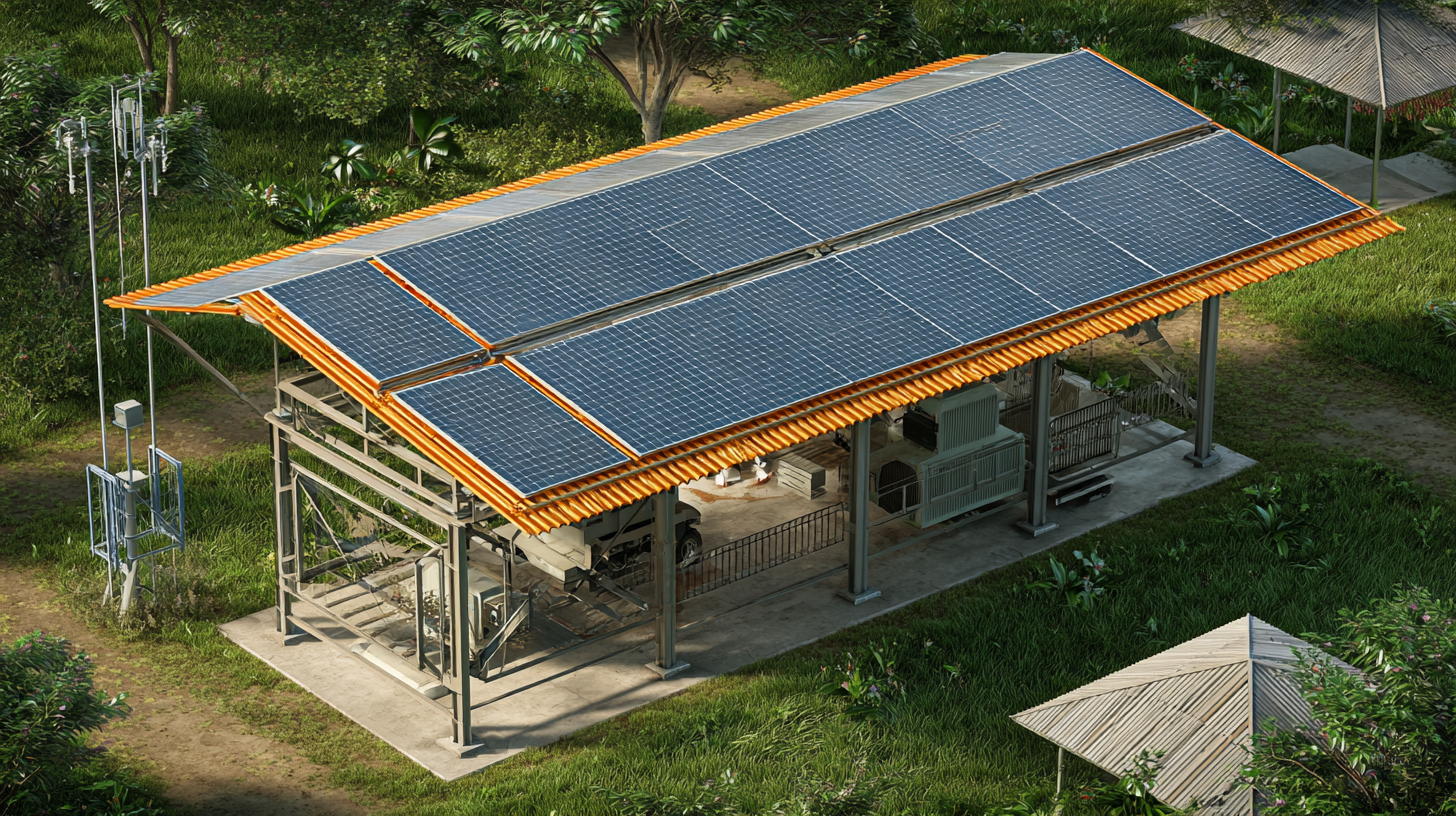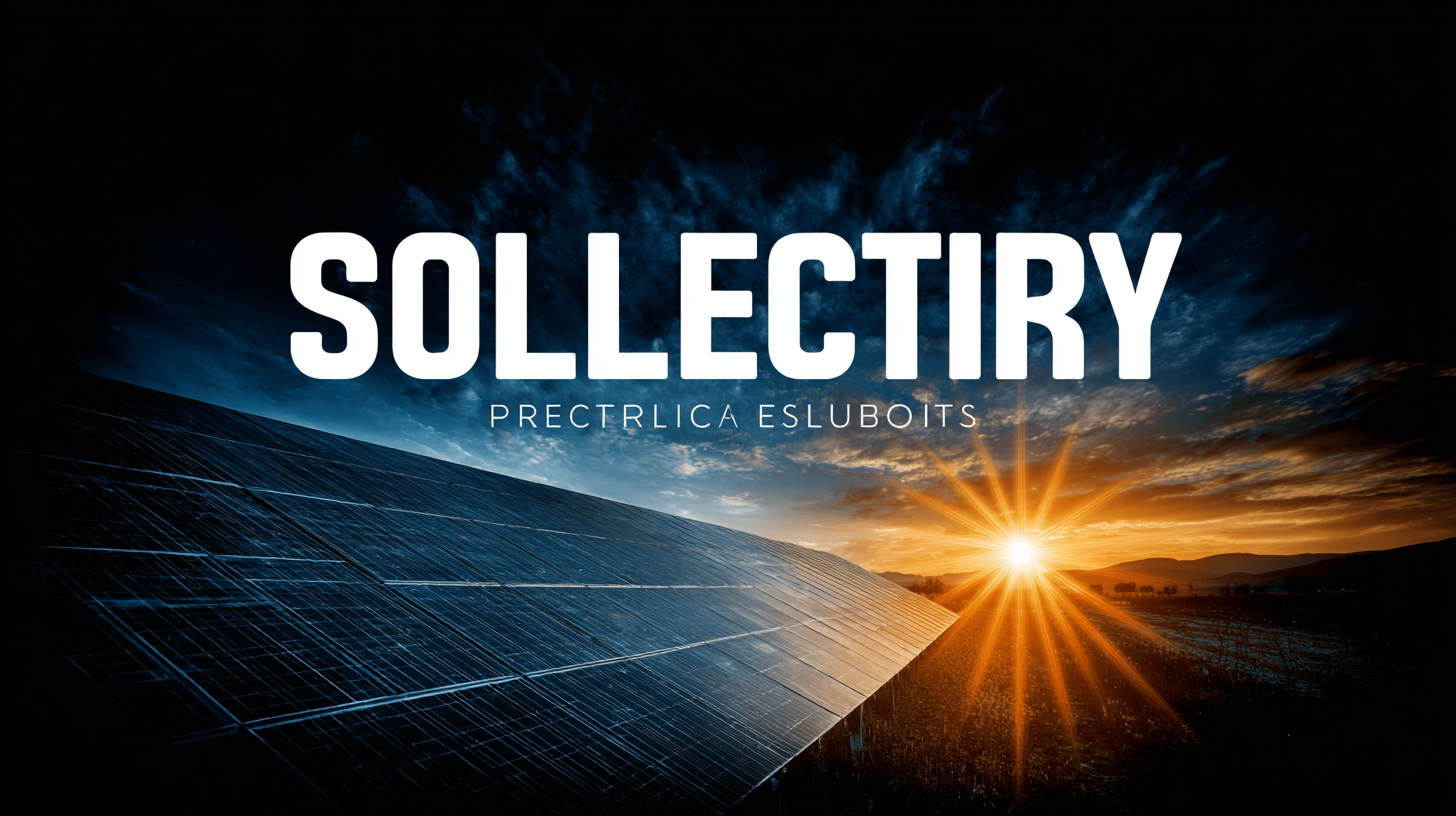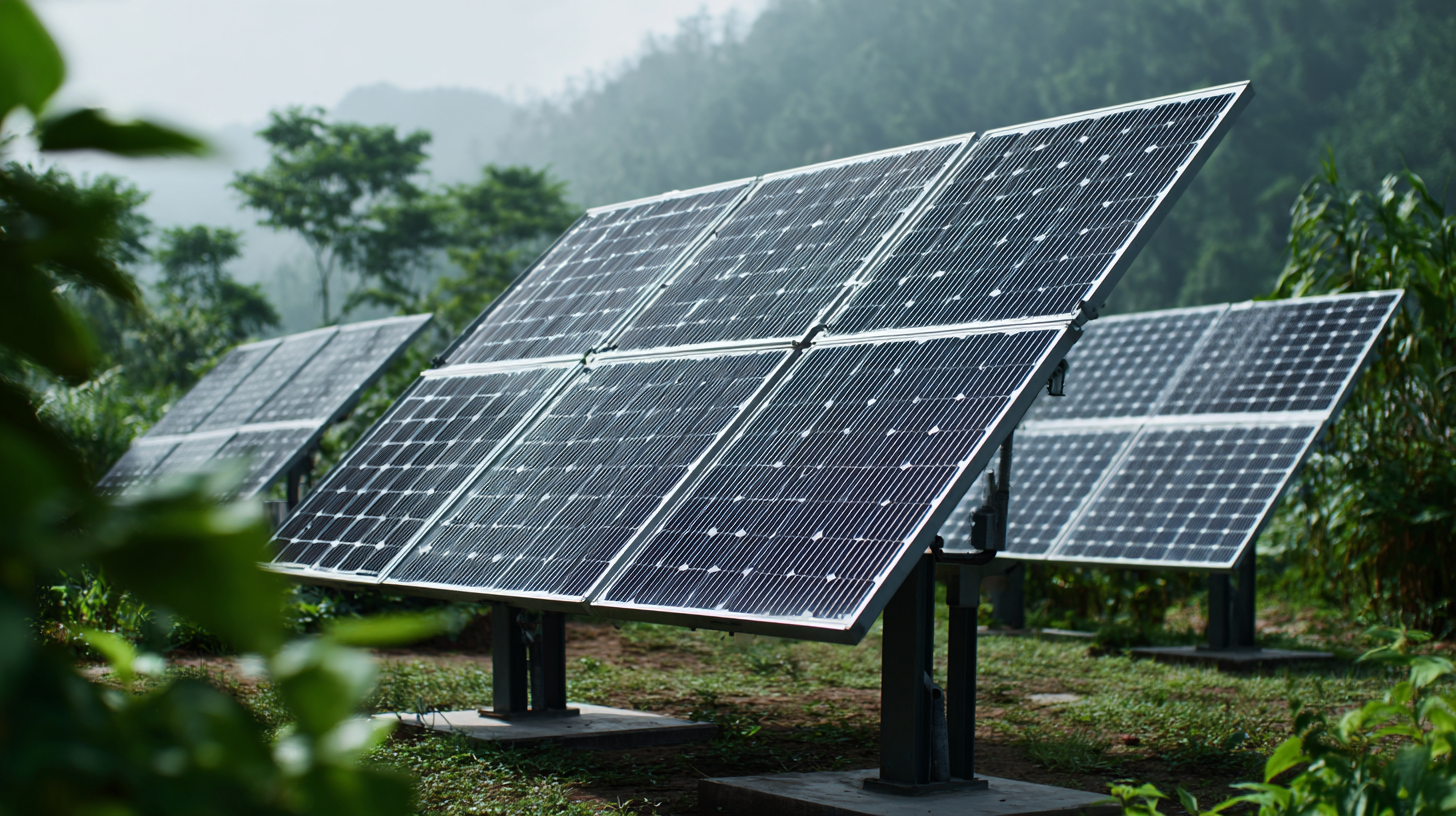Unveiling the Cutting Edge Specifications of the Best Solar Electricity Solutions
As the world increasingly pivots towards sustainable energy solutions, Solar Electricity has emerged as a front-runner in the transition to a greener future. According to a report by the International Energy Agency (IEA), global solar capacity surpassed 800 gigawatts in 2021, contributing significantly to the fight against climate change and reducing reliance on fossil fuels. Additionally, the U.S. Solar Energy Industries Association (SEIA) projects that solar electricity generation could account for 20% of the nation’s electricity supply by 2030. In light of this rapid growth and innovation in the sector, it is essential to delve into the cutting-edge specifications of the best solar electricity solutions currently available. This blog aims to explore the latest advancements and technologies that are driving the efficiency, affordability, and adoption of solar energy, preparing readers to make informed decisions in this rapidly evolving market.

The Rise of Solar Technology in 2025: Key Innovations to Watch
As we move into 2025, the solar technology landscape is undergoing a remarkable transformation. Innovative advancements are reshaping how we harness solar energy, making it more efficient and accessible than ever. One of the most notable trends is the development of bifacial solar panels, which capture sunlight on both sides. This technology maximizes energy production by not only absorbing direct sunlight but also utilizing reflected rays from the ground, thereby increasing overall efficiency by up to 30%.
Moreover, the integration of artificial intelligence in solar energy systems is revolutionizing how we monitor and manage energy consumption. Smart solar inverters equipped with AI algorithms can analyze weather patterns and adjust energy output accordingly, ensuring optimal performance regardless of changing conditions. This intelligence not only enhances energy efficiency but also reduces operational costs. Alongside these innovations, energy storage solutions, such as advanced lithium-sulfur batteries, promise to offer longer-lasting and more sustainable ways to store solar power, ensuring that energy is available even when the sun isn’t shining. As these key technologies evolve, they will undoubtedly play a crucial role in powering our future sustainably.

Understanding the Latest Solar Panel Efficiency Ratings and Comparisons
When it comes to selecting the best solar electricity solutions, understanding the latest solar panel efficiency ratings is crucial. Recent reports indicate that the most efficient solar panels on the market can achieve efficiency ratings exceeding 22%. For instance, manufacturers like SunPower and LG have consistently led the industry with products that reach up to 23.5% efficiency. These advancements are essential, as they allow for greater energy production from limited rooftop space, which is particularly beneficial for urban environments where real estate is at a premium.
In addition to efficiency, comparing solar panel technologies reveals significant differences. Monocrystalline panels, known for their high efficiency and longevity, offer an average efficiency of around 20-22%, while polycrystalline panels typically fall between 15-18%. Furthermore, emerging technologies, such as PERC (Passivated Emitter and Rear Cell) panels, have gained traction by boosting efficiency further, often reaching the higher end of the monocrystalline range. As the solar industry continues to innovate, consumers can expect even more competitive performance metrics, making it an exciting time to invest in renewable energy solutions.
Unveiling the Cutting Edge Specifications of the Best Solar Electricity Solutions - Understanding the Latest Solar Panel Efficiency Ratings and Comparisons
| Solar Panel Type | Efficiency Rating (%) | Power Output (Watt) | Temperature Coefficient (°C) | Warranty (Years) |
|---|---|---|---|---|
| Monocrystalline | 22.5 | 350 | -0.35 | 25 |
| Polysilicon | 19.5 | 300 | -0.40 | 25 |
| Bifacial | 21.0 | 400 | -0.30 | 30 |
| Thin Film | 17.0 | 270 | -0.20 | 10 |
| PERC | 22.0 | 360 | -0.35 | 25 |
Battery Storage Solutions: Enhancing Solar Energy Utilization in 2025
As we look toward 2025, battery storage solutions are poised to revolutionize the utilization of solar energy, enhancing efficiency and sustainability. The recent focus on optimizing battery energy storage systems (BESS) in both decentralized and centralized scenarios presents innovative models for energy-sharing. These developments are crucial for fostering sustainable energy communities, allowing residential, commercial, and industrial sectors to participate actively in energy management and sharing.
One intriguing advance in this field is the use of ice batteries, which not only keep buildings cool but also significantly reduce electricity costs and carbon footprints. The implementation of such technology is set to extend to residential areas, promising a more sustainable and economical approach to energy consumption. Furthermore, collaborative initiatives like the recent large-scale battery energy storage project in Saudi Arabia underscore the global movement toward integrating expansive battery capabilities to support solar energy generation. With a comprehensive strategy encompassing both technological advancements and innovative energy-sharing models, the future of solar energy utilization is brighter than ever.
Solar Battery Storage Capacity and Growth Projections (2023-2025)
Integrating Smart Technology: How IoT is Revolutionizing Solar Energy Systems
As the solar energy sector continues to evolve, the integration of Internet of Things (IoT) technology is fundamentally transforming solar energy systems. According to a report by MarketsandMarkets, the global IoT in the renewable energy market is projected to grow from $6.5 billion in 2020 to $21.5 billion by 2025, which highlights the pivotal role technology plays in enhancing energy solutions. IoT devices enable real-time monitoring of solar panels, optimizing performance and ensuring that systems operate at peak efficiency.
Moreover, smart technology facilitates predictive maintenance, reducing downtime and operational costs. A study published by the National Renewable Energy Laboratory found that IoT-enabled solar systems can increase energy production by up to 30% by predicting issues before they escalate, a significant advantage for both homeowners and commercial entities. These advancements not only provide a more reliable source of energy but also contribute to sustainability efforts, making solar power more accessible and effective in meeting global energy demands.

Cost-Benefit Analysis of Upgrading to Next-Gen Solar Solutions in 2025
As we approach 2025, the landscape of solar electricity solutions is evolving rapidly, making it essential for homeowners and businesses to evaluate the cost-benefit analysis of upgrading to next-generation solar technology. According to a recent report by the International Renewable Energy Agency (IRENA), the global average cost of solar photovoltaic (PV) systems has dropped by 82% since 2010, making solar energy more affordable than ever.
With advancements in technology, including bifacial solar panels and enhanced energy storage systems, we can expect an even greater return on investment in the coming years.
The efficiency of solar panels has also significantly improved, with leading manufacturers reporting efficiencies exceeding 23%, compared to the average 15-17% a decade ago. A study by Wood Mackenzie indicates that upgrading to high-efficiency panels can yield up to 30% more energy output, translating into substantial savings on electricity bills over time. By 2025, the integration of smarter energy management systems will further optimize performance, allowing users to maximize solar production and consumption. This combination of reduced costs and improved efficiency makes the case for transitioning to next-gen solar solutions incredibly compelling for both new installations and existing systems needing upgrades.
